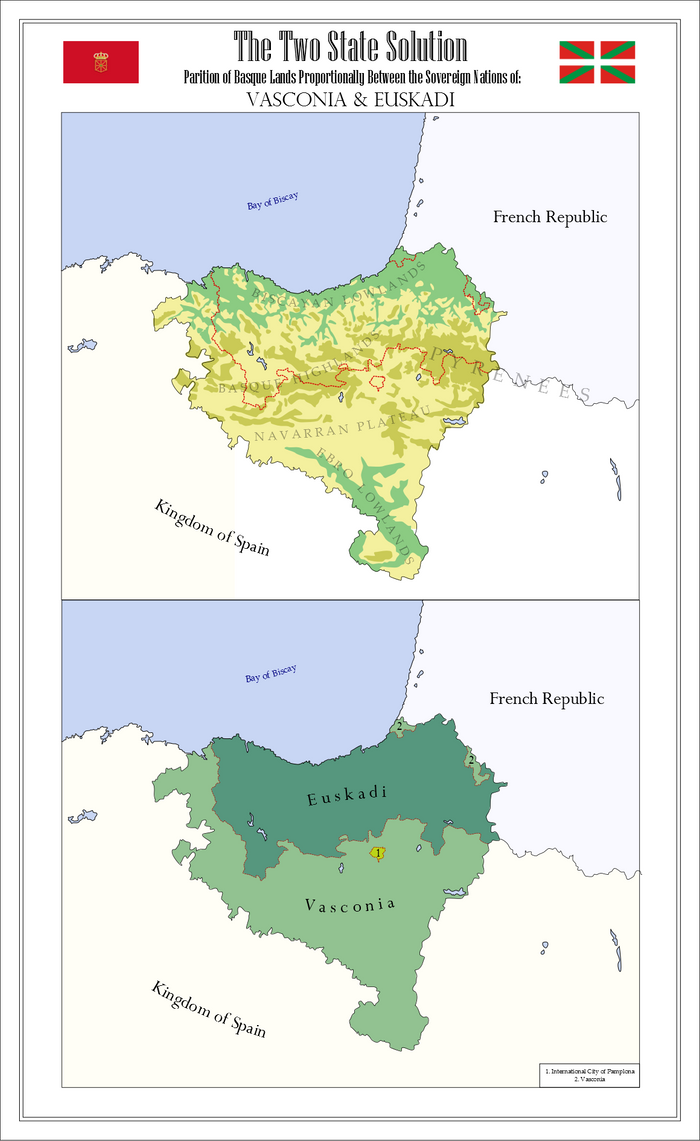You are using an out of date browser. It may not display this or other websites correctly.
You should upgrade or use an alternative browser.
You should upgrade or use an alternative browser.
Rememberences of Map Contests Past
- Thread starter B_Munro
- Start date
Josephus:
Since fantasy maps are allowed, here's my contribution:
The town of Mailberg lies in the lands governed by the prince-abbot of Hardegg. It is a market town locally known for its dumplings, a rather sprightly white wine and the fingerbone of St. Emmeran kept in its main church.
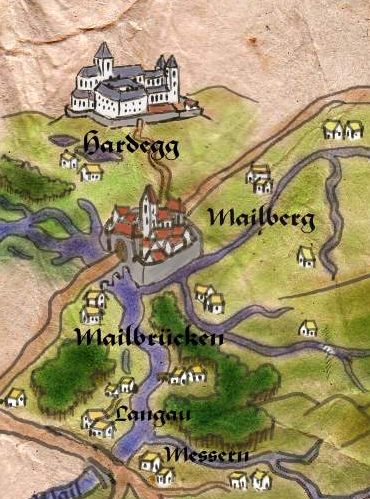
It's from a low-fantasy/late medieval world I cobbled up for an unfinished cooperative novel and possibly RP campaign.
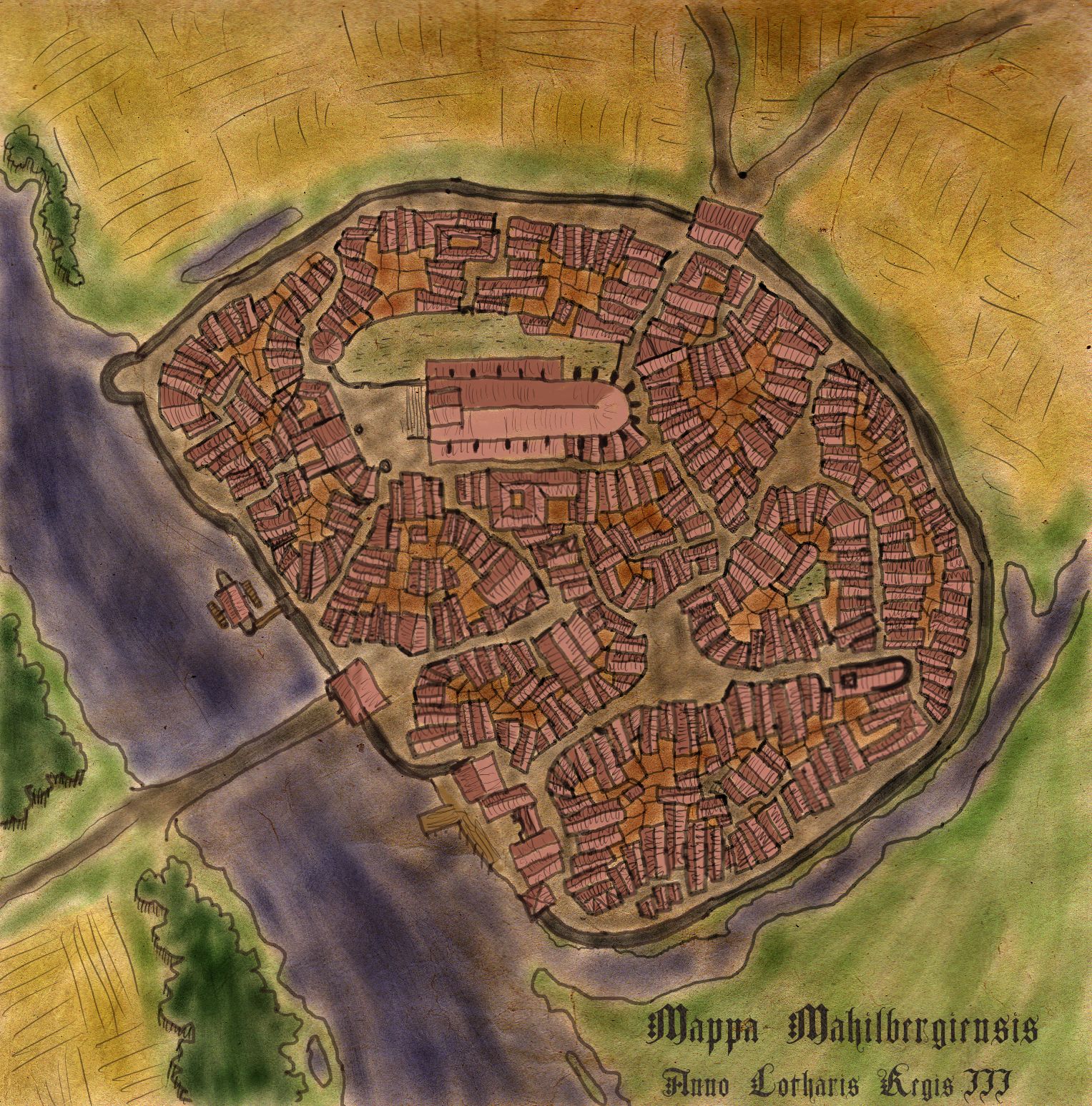
Since fantasy maps are allowed, here's my contribution:
The town of Mailberg lies in the lands governed by the prince-abbot of Hardegg. It is a market town locally known for its dumplings, a rather sprightly white wine and the fingerbone of St. Emmeran kept in its main church.

It's from a low-fantasy/late medieval world I cobbled up for an unfinished cooperative novel and possibly RP campaign.
SpazzReflex:
The tale of Lenniweck, also known as Fort Moor, Bababinnetudun, Lenniwick, or Illenewek, is a long history, characterized by brutality, violence, racism, and classism. The first city on the site, was known as Pagewacteego by the Mahenata Natives [1] was established roughly in the 9th century, though settlement can be traced back to at least 600 AD. Flourishing during the Interregnum Thaw, the residents of Pagewactiego formed part of the Chenco Culture, also known as the Moundbuilders or the Netongans (after the Netongo River)[2][3]. The society was sedentary, characterized by social stratification and large scale trade networks among smaller polities. The end of the Chenco culture arrived during the Early Modern Glaciation, with climate changes disrupting agriculture. Pagewactiego was emptied of people by 1400, and was not reoccupied until the Pulakar.
Fleeing from the English colonies in Raleighsland, black slaves had been trickling into the Native populations, both as slaves and as freedmen. By chance, a Todoro, a Muslim scholar, Muhammadu ibn 'Umar, was enslaved, and survived against the odds to get to America. His ideology spread among European and Native slaves. When the Hitcheeti had to call in allies to surpress a slave revolt, Muslim slaves entered the remnants of the Chenco trade routes. Many freed Africans set up smaller states in competition with the Natives. Ibrahim Kande Ba, leading the Fula speakers he led from captivity, settled Pagewactiego, giving it the name Babanbinnetudun, or 'Great Burial Mounds'. He built fortifications around the largest Mound, el Babanbinnetudun and fished and traded with local Freedmen states for food and survival.
The Inoca Peoples and Babanbinnetudun initially fought, but an eventual alliance was formed after the Wiedeaux Crusade, when large numbers of Natives were displaced, fleeing into the Netongo-Great Lakes Basin. Fula caste system and Islamic political thought entered the ideologies of the Inoca peoples and into the Netongo River basin. A mosque made from mud-bricks were built in Babanbinnetudun, and Kande Ba named himself Emir, and created a loose heirarchy based off of the Pulaaku codes. There were districts set up housing the various social classes: The Dimo (nobility) and Emir's court lived in the East of the city; The Sansari soldiers housed in the West. Non-Muslims were not allowed in the city proper, and the Natives (shatabaku) and middle class Pulukarlived across the Inoca River, and the servile Buzu were housed further away, on the banks of the Netongo River proper. In spite of these conditions, and tension between the radical Islamic Babans and the Ancestor worshiping Inoca, the alliance held firm for more than a century. Population expansion brought by Spanish Cattle was directed outward in a series of jihads against neighboring tribes such as the Shawnee and Miami. Trade brought Afro-Islamic ideology as far north as the Hudson Bay, and West to the Goldstone Mountains[4].
The Inoca-Pulakar period was ended in 1730 when the The Noveau Navarrese Company made the Tribes of the Netongo River Basin swear fealty to Noveau Navarre. Babanbinnetudun refused, and the next summer 13,000 Frenchmen and Native allies captured Babanbinnetudun, executed the Emir, and enslaved thousands of residents. Fort Moor was built over-top of the site of Babanbinnetudun, and only the Emir's Palace, the Great Mound, and the Al-Binnetudun Mosque (re-purposed as a Catholic Cathedral).
Noveau Navarrese Rule proved violent and destructive, with most of the original population of the area enslaved or killed, taking with them a legacy of the Netongans and the Pulukar. Though Native and African wives were very common Fort Moor was a segregated slaveocracy, with a complex racial hierarchy (ironically based in part of the Fula codes) where white French plantation owners lived at the top. For the most part, with the importation of more African Slaves, the social order stabilized into a three tiered system, with 'visible whites' as the ruling class, the 'Metis' forming a middle and lower class, and Africans forming the underclass of slaves.
The Netongo Rebellion saw the abolition of slavery, and the rise of the Watchman State. Taekota Pizi (Peter L'Amiin Noveau Navarre) lead the Netongo Revolution, and devolved power to smaller collectives (sachems), under the oversight of a federal polity. Each sachem could rule their own with various laws, but all obeyed the Great Sachem's laws. Sharia, Roman Law, and tribal codes all coexisted alongside a hybrid representative republic running it all.
Though after Taekota's Death the Netongo State fell to French vassalage once more, his ideas were adopted by the French administrators to keep revolts from occurring again. Eventually, the concept of a watchman state, watching over smaller states while being one polity was adopted all across the globe to varying degrees of success.
Eventually the Netongans were granted independence after the Dissolution of the French State, and the name Fort Moor was retired in favor of Lenniweck, after an early Courlandish translation which appeared on Willhelm von Windau's account of the ruins of the city.
[1] The Beaver Wars as we know them do not occur. The Ohio Basin and Mississippi region still contain Siouan speakers. The POD was James Hawkins contacting the tribes of Georgia, in an attempt to make an alliance against the Spanish.
[2] Netonga River - Mississippi River, as a result of the Courlandish contact with the Siouan speakers of the region rather than the Algonquian tribes of OTL. This name is a known Siouan word.
[3] Pagewactiego means approx. 'Big Mounds/Fort/Hill' in Omaha, the closest surviving language to the extinct Siouans of the Mississippi Basin. I took liberties given the lack of knowledge about Pre-Beaver War Mississippian dwellers.
[4] Rocky Mountains
The City of Many Names, Babanbinnetudun, Pagewactiega, Fort Moor, Takota's Citadel, Islamic capital of America, Birthplace of the Watchman State

The tale of Lenniweck, also known as Fort Moor, Bababinnetudun, Lenniwick, or Illenewek, is a long history, characterized by brutality, violence, racism, and classism. The first city on the site, was known as Pagewacteego by the Mahenata Natives [1] was established roughly in the 9th century, though settlement can be traced back to at least 600 AD. Flourishing during the Interregnum Thaw, the residents of Pagewactiego formed part of the Chenco Culture, also known as the Moundbuilders or the Netongans (after the Netongo River)[2][3]. The society was sedentary, characterized by social stratification and large scale trade networks among smaller polities. The end of the Chenco culture arrived during the Early Modern Glaciation, with climate changes disrupting agriculture. Pagewactiego was emptied of people by 1400, and was not reoccupied until the Pulakar.
Fleeing from the English colonies in Raleighsland, black slaves had been trickling into the Native populations, both as slaves and as freedmen. By chance, a Todoro, a Muslim scholar, Muhammadu ibn 'Umar, was enslaved, and survived against the odds to get to America. His ideology spread among European and Native slaves. When the Hitcheeti had to call in allies to surpress a slave revolt, Muslim slaves entered the remnants of the Chenco trade routes. Many freed Africans set up smaller states in competition with the Natives. Ibrahim Kande Ba, leading the Fula speakers he led from captivity, settled Pagewactiego, giving it the name Babanbinnetudun, or 'Great Burial Mounds'. He built fortifications around the largest Mound, el Babanbinnetudun and fished and traded with local Freedmen states for food and survival.
The Inoca Peoples and Babanbinnetudun initially fought, but an eventual alliance was formed after the Wiedeaux Crusade, when large numbers of Natives were displaced, fleeing into the Netongo-Great Lakes Basin. Fula caste system and Islamic political thought entered the ideologies of the Inoca peoples and into the Netongo River basin. A mosque made from mud-bricks were built in Babanbinnetudun, and Kande Ba named himself Emir, and created a loose heirarchy based off of the Pulaaku codes. There were districts set up housing the various social classes: The Dimo (nobility) and Emir's court lived in the East of the city; The Sansari soldiers housed in the West. Non-Muslims were not allowed in the city proper, and the Natives (shatabaku) and middle class Pulukarlived across the Inoca River, and the servile Buzu were housed further away, on the banks of the Netongo River proper. In spite of these conditions, and tension between the radical Islamic Babans and the Ancestor worshiping Inoca, the alliance held firm for more than a century. Population expansion brought by Spanish Cattle was directed outward in a series of jihads against neighboring tribes such as the Shawnee and Miami. Trade brought Afro-Islamic ideology as far north as the Hudson Bay, and West to the Goldstone Mountains[4].
The Inoca-Pulakar period was ended in 1730 when the The Noveau Navarrese Company made the Tribes of the Netongo River Basin swear fealty to Noveau Navarre. Babanbinnetudun refused, and the next summer 13,000 Frenchmen and Native allies captured Babanbinnetudun, executed the Emir, and enslaved thousands of residents. Fort Moor was built over-top of the site of Babanbinnetudun, and only the Emir's Palace, the Great Mound, and the Al-Binnetudun Mosque (re-purposed as a Catholic Cathedral).
Noveau Navarrese Rule proved violent and destructive, with most of the original population of the area enslaved or killed, taking with them a legacy of the Netongans and the Pulukar. Though Native and African wives were very common Fort Moor was a segregated slaveocracy, with a complex racial hierarchy (ironically based in part of the Fula codes) where white French plantation owners lived at the top. For the most part, with the importation of more African Slaves, the social order stabilized into a three tiered system, with 'visible whites' as the ruling class, the 'Metis' forming a middle and lower class, and Africans forming the underclass of slaves.
The Netongo Rebellion saw the abolition of slavery, and the rise of the Watchman State. Taekota Pizi (Peter L'Amiin Noveau Navarre) lead the Netongo Revolution, and devolved power to smaller collectives (sachems), under the oversight of a federal polity. Each sachem could rule their own with various laws, but all obeyed the Great Sachem's laws. Sharia, Roman Law, and tribal codes all coexisted alongside a hybrid representative republic running it all.
Though after Taekota's Death the Netongo State fell to French vassalage once more, his ideas were adopted by the French administrators to keep revolts from occurring again. Eventually, the concept of a watchman state, watching over smaller states while being one polity was adopted all across the globe to varying degrees of success.
Eventually the Netongans were granted independence after the Dissolution of the French State, and the name Fort Moor was retired in favor of Lenniweck, after an early Courlandish translation which appeared on Willhelm von Windau's account of the ruins of the city.
[1] The Beaver Wars as we know them do not occur. The Ohio Basin and Mississippi region still contain Siouan speakers. The POD was James Hawkins contacting the tribes of Georgia, in an attempt to make an alliance against the Spanish.
[2] Netonga River - Mississippi River, as a result of the Courlandish contact with the Siouan speakers of the region rather than the Algonquian tribes of OTL. This name is a known Siouan word.
[3] Pagewactiego means approx. 'Big Mounds/Fort/Hill' in Omaha, the closest surviving language to the extinct Siouans of the Mississippi Basin. I took liberties given the lack of knowledge about Pre-Beaver War Mississippian dwellers.
[4] Rocky Mountains
The City of Many Names, Babanbinnetudun, Pagewactiega, Fort Moor, Takota's Citadel, Islamic capital of America, Birthplace of the Watchman State
TheLoneAmigo:
A more detailed history to follow (posting to hit the deadline)...
Failure in the civil war due to British intervention; the Union falls to revolution in the late 1880s; initially, the Workersbund is limited to the Midwest, but the remnant U.S. (New York / New England) goes fascist in the 1920s and after the Great War brings the Socialist Internationale and the British Empire together in the 1930s, the remnant is split between the Workersbund and British control.
The Amerikan language was"de-imperialised" during the Totalist period of the early 1900s; essentially a more comprehensive spelling reform with Germanic influences...

A more detailed history to follow (posting to hit the deadline)...
Failure in the civil war due to British intervention; the Union falls to revolution in the late 1880s; initially, the Workersbund is limited to the Midwest, but the remnant U.S. (New York / New England) goes fascist in the 1920s and after the Great War brings the Socialist Internationale and the British Empire together in the 1930s, the remnant is split between the Workersbund and British control.
The Amerikan language was"de-imperialised" during the Totalist period of the early 1900s; essentially a more comprehensive spelling reform with Germanic influences...
tubendo:
The world was devastated by a limited nuclear exchange between NATO and CSTO in the 2020s. Now the world is depleted of resources, electricity and trade; thus pre-industrial society has returned. With most nations states in the Northern Hemisphere breaking apart into total anarchy, the states of the Southern Hemisphere suffered a seperate fate. Without the economy of the world behind it, Australia was a broken nation. And without oil everything went a bit Mad Max, before people started to even attempt rebuilding. Even now in the late 22nd century there is little anyone from Australia has done to remake the nation. Foreigners see the nation as a desert wasteland, it's coal and uranium mines long abandoned. The Eastern coast may seem safe, but disease and famine turns men into tyrants.
Welcome to the land of endless desert and little hope...

The world was devastated by a limited nuclear exchange between NATO and CSTO in the 2020s. Now the world is depleted of resources, electricity and trade; thus pre-industrial society has returned. With most nations states in the Northern Hemisphere breaking apart into total anarchy, the states of the Southern Hemisphere suffered a seperate fate. Without the economy of the world behind it, Australia was a broken nation. And without oil everything went a bit Mad Max, before people started to even attempt rebuilding. Even now in the late 22nd century there is little anyone from Australia has done to remake the nation. Foreigners see the nation as a desert wasteland, it's coal and uranium mines long abandoned. The Eastern coast may seem safe, but disease and famine turns men into tyrants.
Welcome to the land of endless desert and little hope...

JoeyB2198:
The technological and social state of North America, circa 2700 OC (650 AE)
Yellow - hunter-gatherers
Purple - nomadic pastoralists
Green - simple farming societies/chiefdoms
Orange - complex farming societies/warlords
Blue - true state societies
White - uninhabited
Inspired by https://en.wikipedia.org/wiki/Prehistory#/media/File:World_1000_BCE.png

The technological and social state of North America, circa 2700 OC (650 AE)
Yellow - hunter-gatherers
Purple - nomadic pastoralists
Green - simple farming societies/chiefdoms
Orange - complex farming societies/warlords
Blue - true state societies
White - uninhabited
Inspired by https://en.wikipedia.org/wiki/Prehistory#/media/File:World_1000_BCE.png

MrGreyOwl:
After the Great War of 2056, survivors of all countries of the European continent banded together and migrated in western France, one of the less damaged area. Here, they founded Renaissance, dedicated to Mankind's new start.
The League of the Peoples, as they now call themselves, slowly reclaimed the country for the next decades. Explorers and pioneers face the many dangers of the Deadlands for still usable pieces of technology, resources, and above all, the precious omnibots: canisters of programmables nano-machines able to cleanse the contaminated land and make it liveable again.
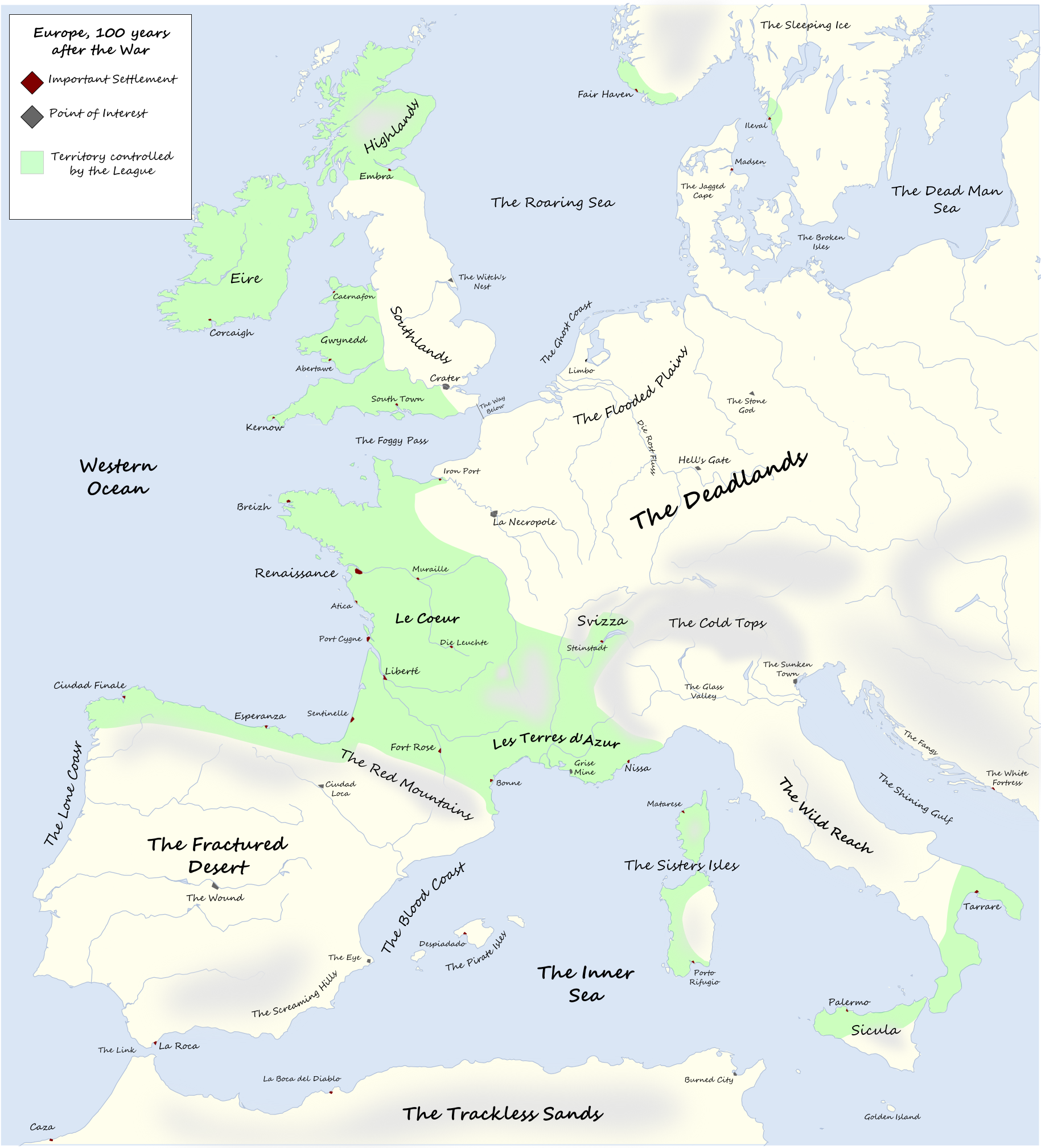
After the Great War of 2056, survivors of all countries of the European continent banded together and migrated in western France, one of the less damaged area. Here, they founded Renaissance, dedicated to Mankind's new start.
The League of the Peoples, as they now call themselves, slowly reclaimed the country for the next decades. Explorers and pioneers face the many dangers of the Deadlands for still usable pieces of technology, resources, and above all, the precious omnibots: canisters of programmables nano-machines able to cleanse the contaminated land and make it liveable again.

Tsar of New Zealand:
My cover of the scenario covered in Walter M. Miller, Jr's A Canticle for Leibowitz; specifically the interquel Saint Leibowitz and the Wild Horse Woman.
But the princes, putting the words of their wise men to naught, thought each to himself: If I but strike quickly enough, and in secret, I shall destroy those others in their sleep, and there will be none to fight back; the earth shall be mine.
Such was the folly of princes, and there followed the Flame Deluge.
The world ended, as many of the Ancients had expected. Man grew proud; fire and light of the Flame Deluge came and went as the earth passed into ice and the darkness of the Simplification. But be it by his own stubbornness or divine intervention, Man persisted, he survived, he rose again.
It is the Year of Our Lord Three Thousand, Two Hundred and Fifty-Four. Eighty years have passed since Hannegan II of Texark vanquished the Laredans at the Nueces, since he pacified the Jackrabbit Horde, since he seized New Rome.
Faced with a vengeful emperor the Papacy evacuated, as it had more than once in its long history, this time to Valana in the Rocky Mountains and the Cathedral of Saint John-in-Exile. Within the caring albeit mercenary embrace of Imperial Denver [1], the Church continues to elect its Popes and maintain a tenuous legitimacy over the wider Church, all the while yearning to reclaim the Throne of Saint Peter.
In what Churchspeak refers to Texarkana but is more commonly known as Texark (or more officially as Hannegan City [2]), Filpeo Harq, Hannegan VII [3], is weighing up his options. His ancestor the second Hannegan pacified the Nomads and drove them north of the Nady Ann; whether he can or indeed should seek to subjugate them further is another question. After all, from the Misspee to the Brave, from the Gulf to the Pacific, Texark stands astride the Southern Plains like a colossus. The telegraph line from Hannegan City to Danfer keeps him informed of developments within Texark’s greatest rival; his spies and emissaries keep him informed of those across the Misspee.
Developments are indeed afoot. The Holy Father Linus VII has died; the Curia must convene to elect a new Pope. As cardinals come from across the known world: Denver, Texark, California, N’Ork, even the lands of Brasil over the ocean, Elia Brownpony, the “Red Cardinal,” is weighing up his own options, such as the possibilities of navigating a candidate to the Papacy who would be amenable to declaring a holy Crusade against the Hannegan as a means to retaking New Rome.
And Brownpony may get his wish. As the sharfs [4] of the Three Nomad Hordes begin to chafe under the encroachment of Texark grasseaters [5] and the increasingly heavy boot of the Hannegan, the Kingdom of the Tenesi and the Forest People of the East are increasingly nervous of Texark ascendancy.
A learned Thon from Texark once said, almost a century ago now (when acting as emissary of his cousin the second Hannegan to the Church by way of the Albertian Order of Leibowitz), that a new age was dawning upon man. One of understanding, of knowledge, of science, a return to that which had been held responsible and punished for the Flame Deluge. He added that this would only come to pass “by violence and upheaval, by flame and by fury, for no change comes calmly over the world.” Whether he will be proven right about the reason for change is uncertain. But it will certainly be violent.
[1] Based in Valana rather than Danfer, which itself lies on the outskirts of a vast field of ruins.
[2] Texark does not lie on the site of the ancient city of Texarkana, but does lie on the same river where it was settled by refugees as a trading post sometime after the Flame Deluge.
[3] Filpeo’s full title is His Imperial Grace Filpeo Harq, By the Grace of God Mayor and Hannegan VII, Sovereign of the Texark Province, Emperor of Laredo, Defender of the Faith, Doctor of Laws, Most High Chief of the Nomads, and Vaquero Supreme of the Plains. Understandably, the name "Hannegan" (with similar connotations to "Caesar") is more commonly used.
[4] Descended from the Ancient title of “sheriff.”
[5] A derogatory term used among the Nomads for agricultural settlements or civilisations; originally applied to the Laredans and broadened to include all who grow crops.
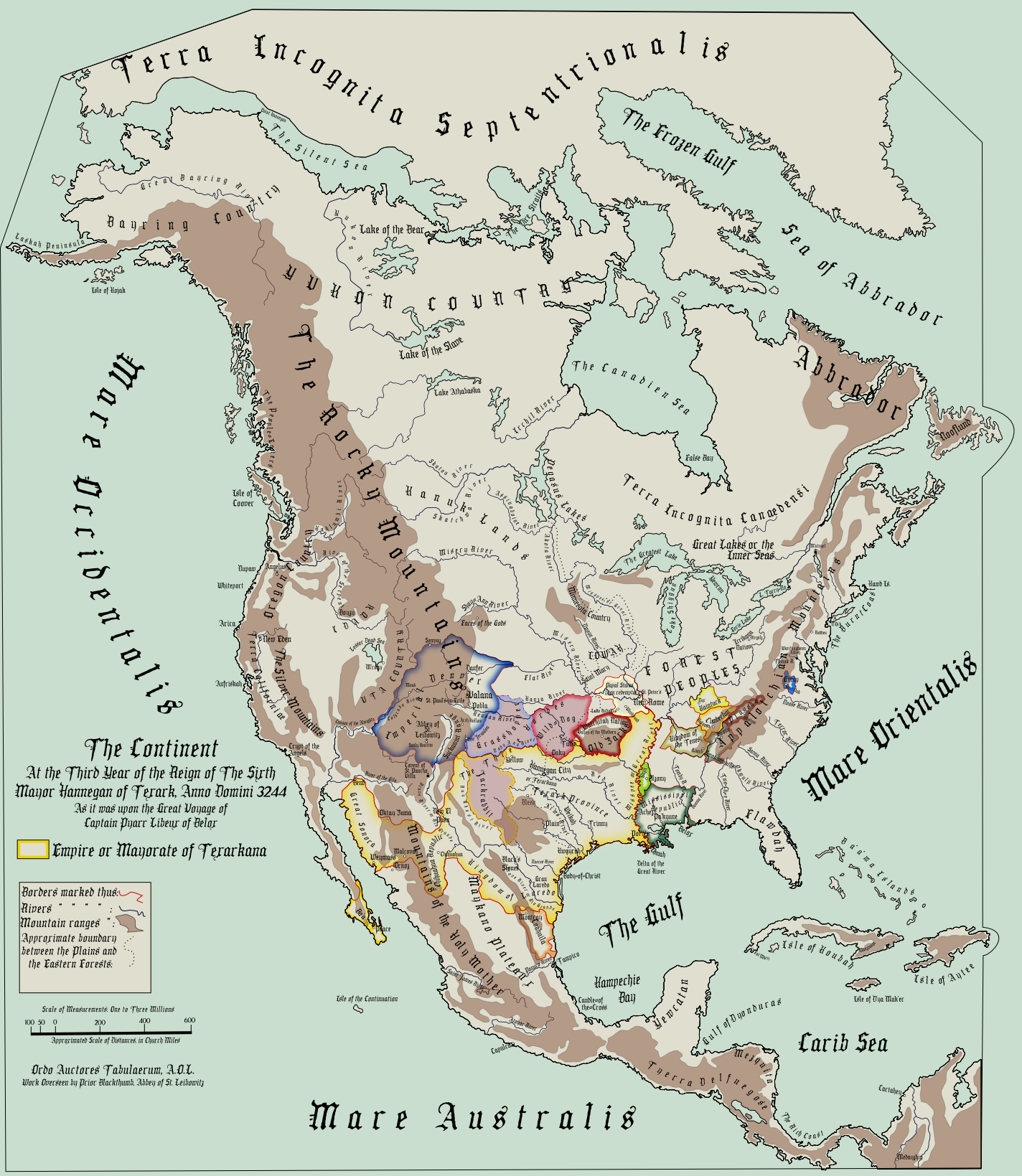
Bigass version: http://bolshiekiwi.deviantart.com/art/A-Map-For-Leibowitz-564120810
My cover of the scenario covered in Walter M. Miller, Jr's A Canticle for Leibowitz; specifically the interquel Saint Leibowitz and the Wild Horse Woman.
But the princes, putting the words of their wise men to naught, thought each to himself: If I but strike quickly enough, and in secret, I shall destroy those others in their sleep, and there will be none to fight back; the earth shall be mine.
Such was the folly of princes, and there followed the Flame Deluge.
The world ended, as many of the Ancients had expected. Man grew proud; fire and light of the Flame Deluge came and went as the earth passed into ice and the darkness of the Simplification. But be it by his own stubbornness or divine intervention, Man persisted, he survived, he rose again.
It is the Year of Our Lord Three Thousand, Two Hundred and Fifty-Four. Eighty years have passed since Hannegan II of Texark vanquished the Laredans at the Nueces, since he pacified the Jackrabbit Horde, since he seized New Rome.
Faced with a vengeful emperor the Papacy evacuated, as it had more than once in its long history, this time to Valana in the Rocky Mountains and the Cathedral of Saint John-in-Exile. Within the caring albeit mercenary embrace of Imperial Denver [1], the Church continues to elect its Popes and maintain a tenuous legitimacy over the wider Church, all the while yearning to reclaim the Throne of Saint Peter.
In what Churchspeak refers to Texarkana but is more commonly known as Texark (or more officially as Hannegan City [2]), Filpeo Harq, Hannegan VII [3], is weighing up his options. His ancestor the second Hannegan pacified the Nomads and drove them north of the Nady Ann; whether he can or indeed should seek to subjugate them further is another question. After all, from the Misspee to the Brave, from the Gulf to the Pacific, Texark stands astride the Southern Plains like a colossus. The telegraph line from Hannegan City to Danfer keeps him informed of developments within Texark’s greatest rival; his spies and emissaries keep him informed of those across the Misspee.
Developments are indeed afoot. The Holy Father Linus VII has died; the Curia must convene to elect a new Pope. As cardinals come from across the known world: Denver, Texark, California, N’Ork, even the lands of Brasil over the ocean, Elia Brownpony, the “Red Cardinal,” is weighing up his own options, such as the possibilities of navigating a candidate to the Papacy who would be amenable to declaring a holy Crusade against the Hannegan as a means to retaking New Rome.
And Brownpony may get his wish. As the sharfs [4] of the Three Nomad Hordes begin to chafe under the encroachment of Texark grasseaters [5] and the increasingly heavy boot of the Hannegan, the Kingdom of the Tenesi and the Forest People of the East are increasingly nervous of Texark ascendancy.
A learned Thon from Texark once said, almost a century ago now (when acting as emissary of his cousin the second Hannegan to the Church by way of the Albertian Order of Leibowitz), that a new age was dawning upon man. One of understanding, of knowledge, of science, a return to that which had been held responsible and punished for the Flame Deluge. He added that this would only come to pass “by violence and upheaval, by flame and by fury, for no change comes calmly over the world.” Whether he will be proven right about the reason for change is uncertain. But it will certainly be violent.
[1] Based in Valana rather than Danfer, which itself lies on the outskirts of a vast field of ruins.
[2] Texark does not lie on the site of the ancient city of Texarkana, but does lie on the same river where it was settled by refugees as a trading post sometime after the Flame Deluge.
[3] Filpeo’s full title is His Imperial Grace Filpeo Harq, By the Grace of God Mayor and Hannegan VII, Sovereign of the Texark Province, Emperor of Laredo, Defender of the Faith, Doctor of Laws, Most High Chief of the Nomads, and Vaquero Supreme of the Plains. Understandably, the name "Hannegan" (with similar connotations to "Caesar") is more commonly used.
[4] Descended from the Ancient title of “sheriff.”
[5] A derogatory term used among the Nomads for agricultural settlements or civilisations; originally applied to the Laredans and broadened to include all who grow crops.

Bigass version: http://bolshiekiwi.deviantart.com/art/A-Map-For-Leibowitz-564120810
Martin23230:
There are very few people alive who still remember the end of the world.
Of course, that's a rather loaded statement. There are still a reasonable people around who were born before, but many of them were children in the spared zones who have very little memory of before. There certainly irradiated men and women who 'survived' the bombings and still live thanks to their affliction, but without getting too deep into a contentious issue counting them that might require a looser definition of 'people'. Or indeed 'remember'.
The Great War hit what was then the United Kingdom hard. Already ravaged by the wars for resources, stretched thin across the globe in an attempt to retain its dying empire and facing chaos just across the water it almost seemed like the old Kingdom wanted to be put out of its misery. There were approximately 100 targets across Great Britain, not only large towns and cities but rural areas that had the misfortune to host an airbase or radar station. The continuous bombardment from all sides, to this day no one knows who fired at who or why, resulted in the devastation of huge areas of the country. It is said that nearly 80% of the population were killed in that first strike alone, and another 10% over the next few days and weeks.
The great cities of the Empire; London, Birmingham, Glasgow, Manchester, were all completely destroyed, the land where they once stood scarred and twisted until no life remained. These are the areas still known as the Deadzones, and still all these years later only a fool would step foot within them. Even worse of course are what came out - irradiated men and creatures that before were the stuff of nightmares.
However, outside outside of those blighted lands the land of Blighty remains. It was impossible (or rather impractical) to bomb the entire country, and outside of the urban centres 'civilised' live still clings onto the fringes of the island - the so called Living zones or occasionally (and with typical British humour) the "lucky lands". Here the semblance of government remains, in come cases tracing itself back to pre-war authorities or in others insisting its independence by force of arms. Between these areas and the deadzones form what are usually called the Wastelands. Although not directly destroyed by the bombing, these areas felt their effects through radiation, destructive storms and the creatures which emerged. In most cases these lands are filled with banditry, lawlessness and chaos. There exist a few independent settlements, primarily formed of irradiated men and the occasional trader that dares to cross the gulfs between the living zones. But anyone who wonders the Wild Wasteland will come across all forms of settlements, camps, creatures and horrors off all sorts.
The largest of the unaffected areas straddles the old borderlands between England and Scotland. With few strategic targets other than the Solway Firth and the industrial coast around the city of Newcastle, a large rural area of what was once Northumbria was spared the destruction of the bombing. The only city within this area is the former medieval fortress and county town of Durham, which contained not only an important strategic position at the centre of the Durham coalfields, but also a large academic community at the University of Durham; the only major British university to survive outside of some colleges of the University of Wales. Durham quickly became a centre of the rebuilding effort, and today stands as the capital of the Northern League; a militaristic state covering much of the unaffected areas of northern England. In opposition to the League stands the Scottish Union, formed voluntarily from several rural communities across the Scottish Borders. Two smaller states still retain their independence: Lakeland covering the Lake District and the strategic port and shipbuilding hub of Barrow, and Berwickshire which remains independent by playing off both its Scottish and English origins. Just off the coast lies the Isle of Man, officially independent and very non-interventionist in the affairs of the mainland.
Around the Irish Sea there is also a large area unaffected by the bombings across what was once the principality of Wales. A majority of the bickering city-states and kingdoms of this area only recently united into the New Wales Republic, which has quickly formed a unified professional military and government structure in the model of the Old World. The NWR military proved it's worth in the recent campaign to secure a southern port, and the two-headed dragon now flies proudly above Carmarthen. Not all the Welsh states have been united however, notably the city-state of Wrexham which took in many refugees from the surrounding English cities following the war politely declined to submit to the Aber government. More worryingly, in the east the feudal Kingdom of Powys still fights for its independence, claiming that it is the true heir of Wales rather than the upstart Republic. Beyond the Kingdom, amongst the mountains and valleys of the Brecon Beacons lies the mysterious state of Fredonia, where it is rumoured there exists an underground community known as Dark Mountain. Any visiting traders are offered no interest but are allowed to pass unhindered, whilst any Powysian forces are drawn off by booby-traps and sharpshooting.
Further around the coast at the tip of England a few more rural communities thrive, although cut off by the Deadlands around Plymouth, Exeter and Somerset. In north the Devon Council still claims authority back to before the war, and controls a sparely-populated area dominated by moorland. To the north on the island of Lundy exists the independent Principality of New Sealand, as a state its remarkable existence is matched only by its remarkably unstable political system. At the very edge of the peninsular lies Free Cornwall, incredibly isolated and at the mercy of the Atlantic storms. Finally on the south coast lies the 'Republic' of Portland, a state that makes a living out of piracy and enslavement of peoples from the surrounding lands. Its strong navy recently annexed the previously independent state of Salcombe, to cries of protest from the Devon Council, and many say that without a combined effort Cornwall may be the next target.
The final area, in the south-east of England, is the most populated and perhaps the luckiest of the 'lucky lands'. The city of Brighton and its surrounding suburbs and the channel ports survived the bombing without being targeted, whether by design or accident may never be known. Many of the coastal settlements joined together to form the Federation of the Five Ports, going on to dominate a good deal of trade throughout northern Europe from their heavily-fortified headquarters on the Isle of Thanet. The city of Brighton itself forms the core of the BrightTown Commune, a remarkably diverse state and confusing in terms of population, government and society; albeit one with a severe gang problem. Inland exists two more states, the traditionalist Kingdom of Kentia and the modernist Susex Republic; the latter has by far the greatest strength but is beset by internal strife.
Overall, the lands of Britain have seen better times. Whilst in some places force of arms, suppression and anarchy rule there are still the occasional points of light throughout the island. The future of these remains uncertain, especially considering outside interests from across the seas...
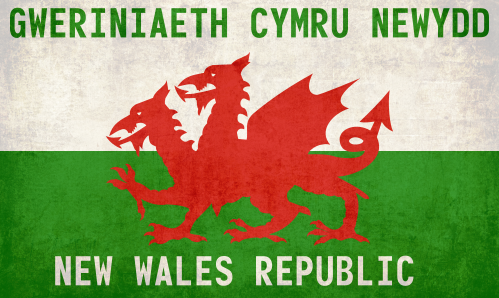
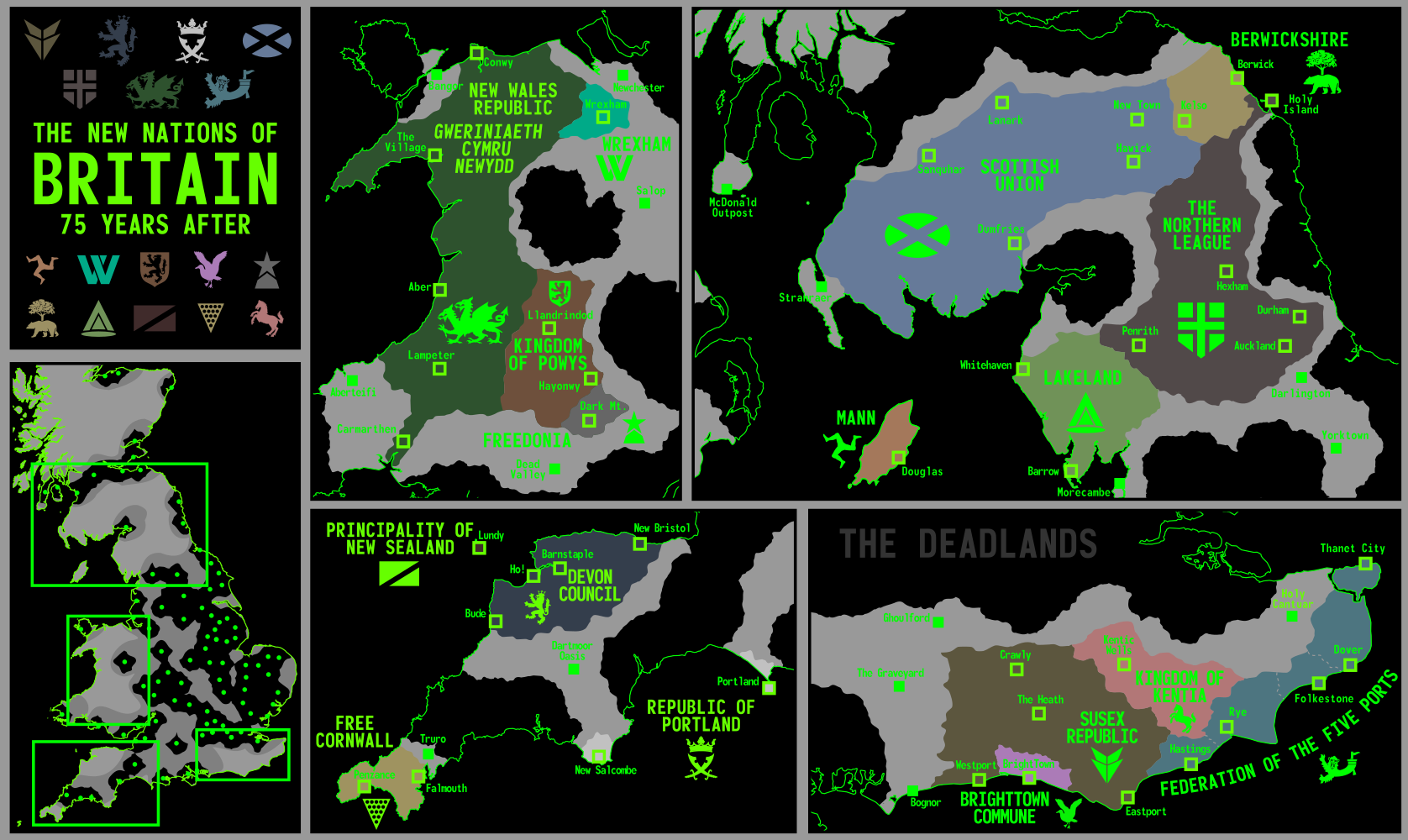
There are very few people alive who still remember the end of the world.
Of course, that's a rather loaded statement. There are still a reasonable people around who were born before, but many of them were children in the spared zones who have very little memory of before. There certainly irradiated men and women who 'survived' the bombings and still live thanks to their affliction, but without getting too deep into a contentious issue counting them that might require a looser definition of 'people'. Or indeed 'remember'.
The Great War hit what was then the United Kingdom hard. Already ravaged by the wars for resources, stretched thin across the globe in an attempt to retain its dying empire and facing chaos just across the water it almost seemed like the old Kingdom wanted to be put out of its misery. There were approximately 100 targets across Great Britain, not only large towns and cities but rural areas that had the misfortune to host an airbase or radar station. The continuous bombardment from all sides, to this day no one knows who fired at who or why, resulted in the devastation of huge areas of the country. It is said that nearly 80% of the population were killed in that first strike alone, and another 10% over the next few days and weeks.
The great cities of the Empire; London, Birmingham, Glasgow, Manchester, were all completely destroyed, the land where they once stood scarred and twisted until no life remained. These are the areas still known as the Deadzones, and still all these years later only a fool would step foot within them. Even worse of course are what came out - irradiated men and creatures that before were the stuff of nightmares.
However, outside outside of those blighted lands the land of Blighty remains. It was impossible (or rather impractical) to bomb the entire country, and outside of the urban centres 'civilised' live still clings onto the fringes of the island - the so called Living zones or occasionally (and with typical British humour) the "lucky lands". Here the semblance of government remains, in come cases tracing itself back to pre-war authorities or in others insisting its independence by force of arms. Between these areas and the deadzones form what are usually called the Wastelands. Although not directly destroyed by the bombing, these areas felt their effects through radiation, destructive storms and the creatures which emerged. In most cases these lands are filled with banditry, lawlessness and chaos. There exist a few independent settlements, primarily formed of irradiated men and the occasional trader that dares to cross the gulfs between the living zones. But anyone who wonders the Wild Wasteland will come across all forms of settlements, camps, creatures and horrors off all sorts.
The largest of the unaffected areas straddles the old borderlands between England and Scotland. With few strategic targets other than the Solway Firth and the industrial coast around the city of Newcastle, a large rural area of what was once Northumbria was spared the destruction of the bombing. The only city within this area is the former medieval fortress and county town of Durham, which contained not only an important strategic position at the centre of the Durham coalfields, but also a large academic community at the University of Durham; the only major British university to survive outside of some colleges of the University of Wales. Durham quickly became a centre of the rebuilding effort, and today stands as the capital of the Northern League; a militaristic state covering much of the unaffected areas of northern England. In opposition to the League stands the Scottish Union, formed voluntarily from several rural communities across the Scottish Borders. Two smaller states still retain their independence: Lakeland covering the Lake District and the strategic port and shipbuilding hub of Barrow, and Berwickshire which remains independent by playing off both its Scottish and English origins. Just off the coast lies the Isle of Man, officially independent and very non-interventionist in the affairs of the mainland.
Around the Irish Sea there is also a large area unaffected by the bombings across what was once the principality of Wales. A majority of the bickering city-states and kingdoms of this area only recently united into the New Wales Republic, which has quickly formed a unified professional military and government structure in the model of the Old World. The NWR military proved it's worth in the recent campaign to secure a southern port, and the two-headed dragon now flies proudly above Carmarthen. Not all the Welsh states have been united however, notably the city-state of Wrexham which took in many refugees from the surrounding English cities following the war politely declined to submit to the Aber government. More worryingly, in the east the feudal Kingdom of Powys still fights for its independence, claiming that it is the true heir of Wales rather than the upstart Republic. Beyond the Kingdom, amongst the mountains and valleys of the Brecon Beacons lies the mysterious state of Fredonia, where it is rumoured there exists an underground community known as Dark Mountain. Any visiting traders are offered no interest but are allowed to pass unhindered, whilst any Powysian forces are drawn off by booby-traps and sharpshooting.
Further around the coast at the tip of England a few more rural communities thrive, although cut off by the Deadlands around Plymouth, Exeter and Somerset. In north the Devon Council still claims authority back to before the war, and controls a sparely-populated area dominated by moorland. To the north on the island of Lundy exists the independent Principality of New Sealand, as a state its remarkable existence is matched only by its remarkably unstable political system. At the very edge of the peninsular lies Free Cornwall, incredibly isolated and at the mercy of the Atlantic storms. Finally on the south coast lies the 'Republic' of Portland, a state that makes a living out of piracy and enslavement of peoples from the surrounding lands. Its strong navy recently annexed the previously independent state of Salcombe, to cries of protest from the Devon Council, and many say that without a combined effort Cornwall may be the next target.
The final area, in the south-east of England, is the most populated and perhaps the luckiest of the 'lucky lands'. The city of Brighton and its surrounding suburbs and the channel ports survived the bombing without being targeted, whether by design or accident may never be known. Many of the coastal settlements joined together to form the Federation of the Five Ports, going on to dominate a good deal of trade throughout northern Europe from their heavily-fortified headquarters on the Isle of Thanet. The city of Brighton itself forms the core of the BrightTown Commune, a remarkably diverse state and confusing in terms of population, government and society; albeit one with a severe gang problem. Inland exists two more states, the traditionalist Kingdom of Kentia and the modernist Susex Republic; the latter has by far the greatest strength but is beset by internal strife.
Overall, the lands of Britain have seen better times. Whilst in some places force of arms, suppression and anarchy rule there are still the occasional points of light throughout the island. The future of these remains uncertain, especially considering outside interests from across the seas...


Upvoteanthology:
Here's my entry. WWIII happens, and Europe flees to Africa. Basically, read the thing in the map.
Some credity-legal stuff:
https://commons.wikimedia.org/wiki/File reu%C3%9Fischer_Adler_(1871-1914).svg - Work of David Liuzzo
reu%C3%9Fischer_Adler_(1871-1914).svg - Work of David Liuzzo
https://commons.wikimedia.org/wiki/File:Kenya_Coat_of_Arms-detail.svg - Ashiriz - Wikimedia Commons
Many thanks to SoaringAven for making the arms for me.

Here's my entry. WWIII happens, and Europe flees to Africa. Basically, read the thing in the map.
Some credity-legal stuff:
https://commons.wikimedia.org/wiki/File
https://commons.wikimedia.org/wiki/File:Kenya_Coat_of_Arms-detail.svg - Ashiriz - Wikimedia Commons
Many thanks to SoaringAven for making the arms for me.

Share:
